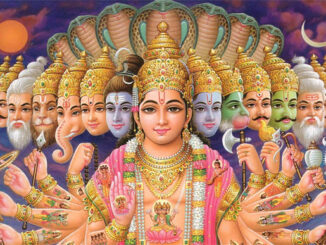
Are the gods finished? Is religion headed for the dustbin of history? If you believe the oracles of atheism, the answer is yes on both counts.
Sam Harris, Richard Dawkins, Christopher Hitchens and Daniel Dennett are leading crusaders against religion. Their titles are riding best-selling lists: Harris’s “The End of Faith” and “Letter to a Christian Nation”, Dennett’s “Breaking the Spell”, Dawkins’s “The God Delusion” and Hitchens’s “God Is Not Great”. If nothing else, they will get rich selling books.
These oracles call for the end to religion. They propose an unfettered worship of science. Ironically they are not scientific about forecasting the future of religion. After all, aren’t scientists supposed to be objective?
It doesn’t have to be this way. There are enough tools and data available to make forecasts. Indeed, best estimates show for the next 200 years may surprise some. They show that over 80% of the world’s population will continue to be connected with religions. These estimates go out for the next 200 years. Are the oracles guilty of wishful thinking?
What data are available? Consider this. Governments have collected data on religious populations and practices since the 12th century. Over 120 countries gather this data in census surveys. Religious organizations put vast efforts into assembling data on about 10,000 distinct religions.
Dr. Todd M. Johnson, director of the Center for the Study of Global Christianity, and David B. Barrett, of Regent University are the authors of the World Christian Encyclopedia. Published in 2001, it is the largest database on religious affiliation in the world.
While the data are far from precise, they do provide an admirable starting point. It is possible to identify trends and make forecasts. Yet, notes Todd Johnson, experts rarely use this information.
What does the encyclopedia show? Well, great shifts took place between 1900 and 2000. Christianity became the first universal religion geographically. It has remained the biggest at 32 percent. It lost market share during the reign of communism. Second-ranking Islam expanded. Buddhism and Hinduism declined slightly. Chinese and other folk faiths dropped, as did Judaism. The nonreligious group, including atheists, was negligible in 1900. It claimed nearly a fifth of the world’s people at one point in the 20th century at the peak of communism. However, it had declined since European Communism’s fall.
The data also provide a solid base on which to make forecasts. Johnson and Barrett have done just that, publishing the results in the November, 2004 issue of the journal, “Futures”.
They suggest that the key to the future of religion is demographics. The main agent of change is births minus deaths. Children are almost always counted to have the religion of their parents. This is the law in Norway and many other countries.
Johnson and Barrett set out four scenarios for the next 200 years. The scenarios were: pure demographics, demographics plus conversions, a Muslim renaissance and a nonreligious resurgence. Under all scenarios, they found that religion is surprisingly resilient.
According to the first three scenarios, the nonreligious will represent about 10 percent of the world’s population. And atheists only 2 percent. Even an unlikely resurgence of the nonreligious would still see 66 percent of the world’s population connected with some religion. Christians will likely continue to be the world’s largest religion. They will still claim about 32 percent of total population, despite a strong challenge by Islam.
So, it may be a win-win situation. The oracles of atheism are enjoying solid book sales. However, gods are still smiling. Their religions will be around for another 200 years.
Proudly WWW.PONIREVO.COM
Source by David Dent



